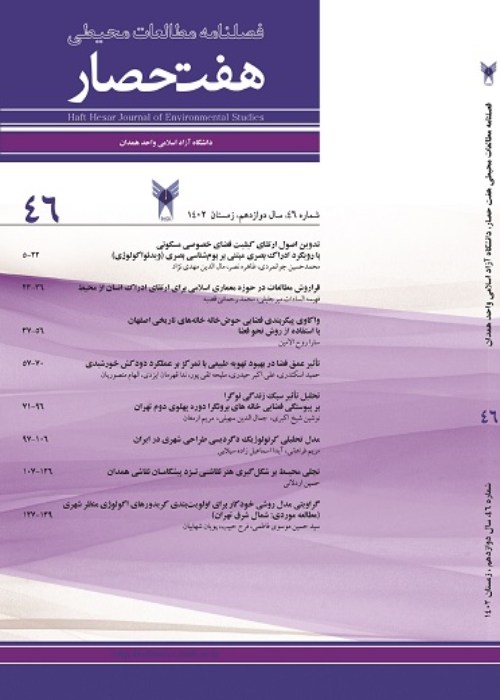An Investigation of Physical-Social Resilience at Urban Historical Declined Area with an Emphasis on Sustainable Urban Form by Optimal Distance Average Method (Case Study: Urban Historical Declined Area of Tehran)
Urban areas today face a number of structural problems that have a lot of impact on the extent of damages. These changes are evident in most cases, in addition to the physical dimensions, in both social and economic dimensions, one of which is exhausting. The concept of urban resilience, considering the extent of these changes, seeks to predict the damage, as easily as to stabilize a system that is particularly important when discussing about valuable historical areas. Urban form as comprehensive idea, composed of all visible elements of the urban center, whether natural or artifact, and the spatial crystallization and form of the activities of the urban community, which is exemplified by its three dimensional nature, in addition to the surface, in bulk. This composition includes human artifacts and natural elements, that the study of its resilience can be a shortcut to measure the stability of the system on an intermediate scale. The aim of this study is to explain the structure and optimal model of the resilience in the urban form of the declined neighborhood in historic neighborhoods of Tehran, which includes Udlajan, Sanglej, Bazzar, Chale-Medan and Dolat neighborhoods. Therefore, this numerical value can be analyzed in the most appropriate method at the level of comparison with the successful global examples, and the urban form resilience is assessed with emphasis on social and physical dimensions. After analyzing the findings, it can provide the necessary strategy and policy to explain and document in urban design projects. In the present methodology, which is analytical-descriptive after collecting data in a library and survey, metric calculations in the form of maps, tables and graphics have been used in the analysis of urban form on the scale of residential neighborhood by analytical method, and to evaluate the local community dimension, numbers of questionnaires have been used on a ordinal scale. In the following, by using the distance from the optimal level, calculating the level of urban form resilience for each neighborhood. The results indicate that the resilience of the urban form of these neighborhoods has an inappropriate distance from the optimal optimum level in successful experiments and practically isn’t resilience, but Dolat neighborhood with an ARI of 0.65 can be a more appropriate example in explaining the urban regeneration approach. Finally, with the explanation and emphasis on the fundamental concepts of sustainability and resilience, due to the long history of historical areas in most metropolises, our country can change the nature of the type of intervention in order to develop tourism and optimize the efficiency of these areas and these issues can be considered as a principle in most urban design projects.
- حق عضویت دریافتی صرف حمایت از نشریات عضو و نگهداری، تکمیل و توسعه مگیران میشود.
- پرداخت حق اشتراک و دانلود مقالات اجازه بازنشر آن در سایر رسانههای چاپی و دیجیتال را به کاربر نمیدهد.


